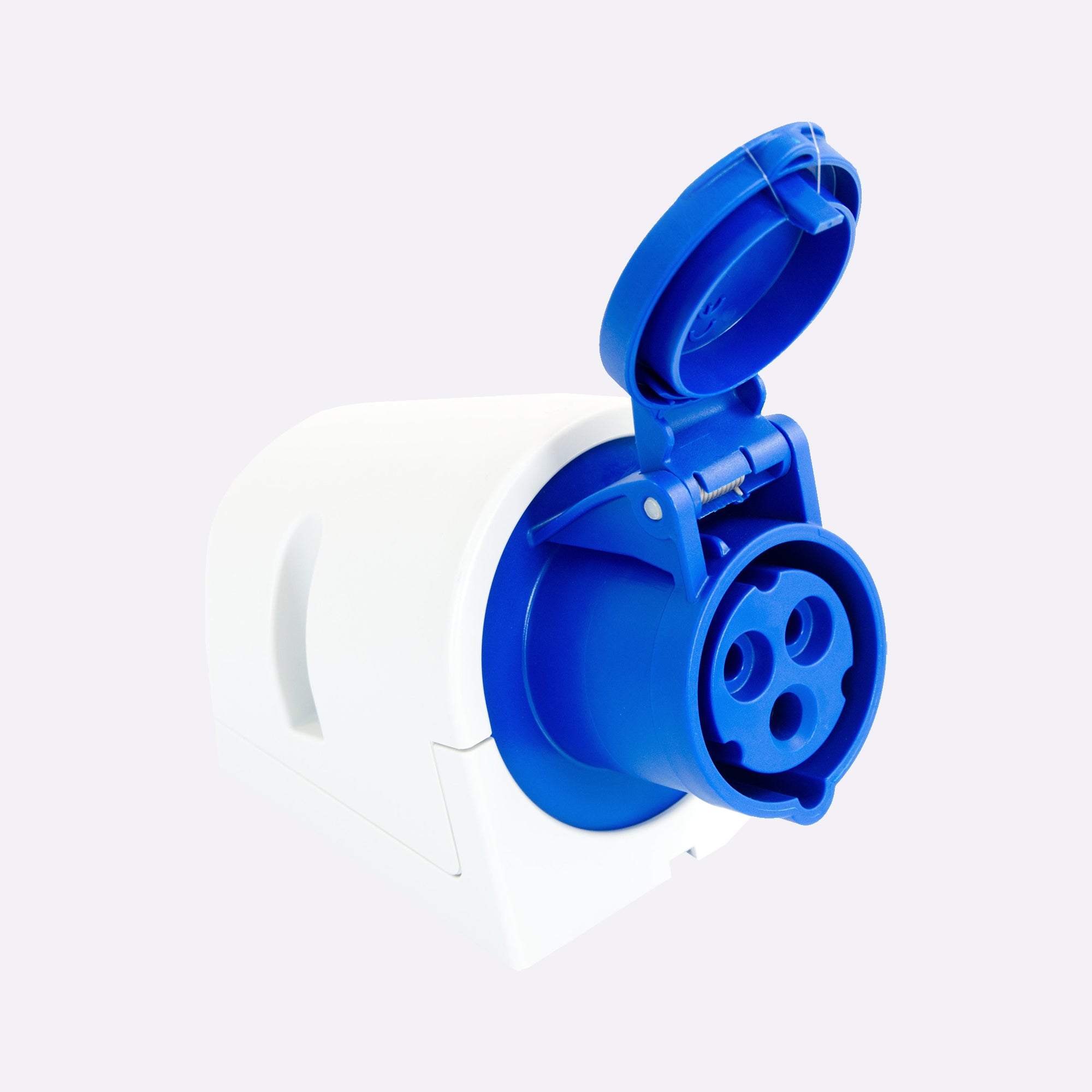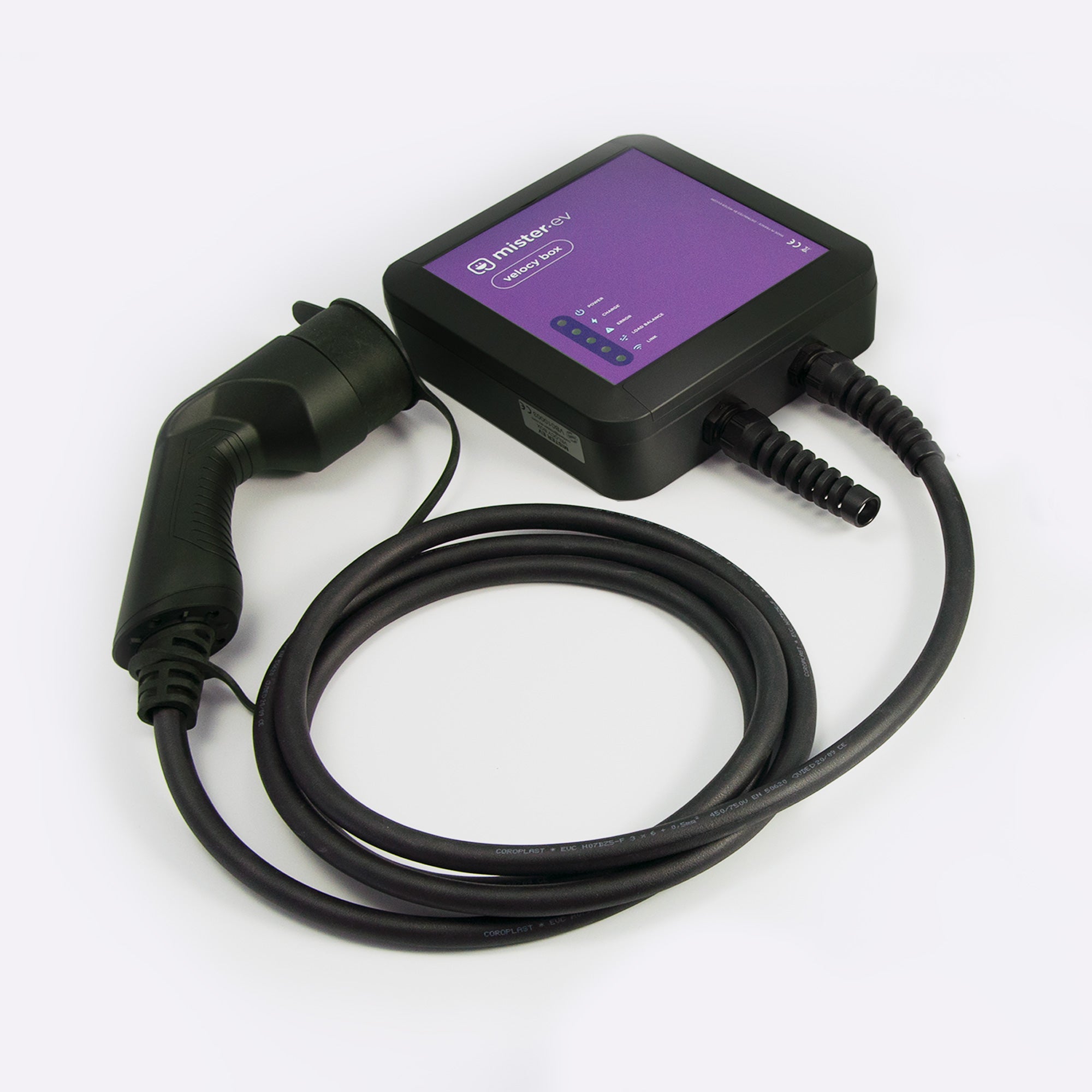Electric cars are riding high on a wave of popularity due to their low impact on the environment. However, a major issue EV owners find irksome is the length of time it takes to charge. Fortunately, there are ways of home-charging your EV more rapidly.
One of the most common ways of charging your EV faster at home is to use a more powerful EV charger. Standard home chargers plugged into domestic power outlets have a power rating 2.3 kW, but more powerful mobile chargers are available with power ratings of 3.7 kW, 7.3 kW, 11 kW and even 22 kW. These versatile, more powerful chargers can divide your EV charging time by 10 in optimum conditions. To benefit from these faster charging times with these chargers for EVs, you need to install a heavy-duty socket.
Using a power socket of type CEE17 (P17) with an EV charger is the best way of charging more rapidly. These heady-duty sockets can charge EVs of any make and are, moreover, often used by Tesla drivers. With a CEE17 heavy-duty socket, you can charge at a power rating of up to 22 kW on a three-phase installation, which significantly reduces charging time.
There are also fast charging stations that can charge your EV at home in just a few hours. These charging stations are usually more expensive to buy, but they do offer extremely rapid charging times, just like the mobile charger for EV owners who need to top up fast.
Whether you are interested in a mobile charger or a home charging station, installing a power line dedicated to charging means you can charge your EV in optimum conditions and therefore more rapidly. When you use a dedicated power line, you can be sure of charging your EV without affecting your other electrical appliances at home when they are running at the same time.
To benefit from a dedicated power line, it is highly recommended to use the appropriate cable and circuit breaker and to make sure that the capacity of your fuse board is sufficient to cope with this extra demand in power. You are advised to contact a qualified electrician to install this dedicated power line for your own safety and be sure that the installation conforms to electrical wiring standards.

Using a charging cable with a power rating equal to or higher than the EV’s on-board charger also means you can charge more rapidly. Charging will not be slowed down by a cable with an insufficient rating. Many references for charging cables are available providing the right charging solution for each electric vehicle depending on their power rating, the car-side connector and the charging station connectors.
Finally, there are everyday habits that you can adopt to speed up charging your EV, in addition to rapid charging solutions:
- When you charge your EV in a mild ambient temperature in a garage, away from extremes of hot and cold weather, the charging time will be reduced.
- The same is true when you activate battery preconditioning before charging - if you EV features this option. This means you can preheat the vehicle in winter to charge faster. This option is particularly recommended before using a Combo CCS or CHAdeMO DC rapid charging station.
It should be noted that the charging speed will also depend on your EV’s battery capacity and the power rating of the power outlet or charger you are using. It is therefore essential to consult the specifications of your vehicle and check out the charging options available for your EV before coming to a decision.












Bonjour, J’ai un Q8 60 eTFSI de 2021 que je recharge sur une prise Green up avec le cable d’origine Audi – Il me faut plus de 10h pour arriver a récupérer 80% (environ 40km) – avez vous une solution plus rapide ? Cdlt,
Leave a comment